We are humus in the making
A dispatch from a nascent Natural Academy, this narrative is an invitation for us to cook and discover soil together.

Since 2016, my companion and I have been regenerating a small farm on the west coast of Tuscany, laying the groundwork for a Natural Academy. This entailed uncovering immense bramble overgrowth, liberating trees and old growth vines from a previous vineyard.
Soil has been one of the major materials to relate to and with. is it too dry? is it too wet? does it need more nutrients? are the microorganisms inside fulfilled? are worms flourishing in abundance beneath the surface?
Through this liaison-making, I have come to understand that the soil’s condition will determine both the health of the garden and any produce we try to grow in it, be it vegetables, vines, or fruit.
We both work with the soil’s health by way of composting, taking on different roles and responsibilities.
To grow our produce, each year we lay a new layer of soil on the previous year’s ground-cover. This “new soil” comes from our compost beds. Slowly, these layers build up in thickness and create richer soil for the vegetable beds. But we also add compost around each fruit tree we have planted, in the vineyard we are planting, and on the new vineyard terraces we keep uncovering. On the terraces, the compost is laid down in long strips; each will become a row of vines. In mid-autumn, we embed the strips of compost with green fertilizer seeds. These are nitrogen-rich legume crops, clover and peas, that further enrich the soil so that it is ready for vine-planting in the spring.
These annual new layers of soil come from our compost. Compost that eventually becomes soil. Which then becomes food, drink, and energy, both for us and the many species we co-habit with.
This is a remarkable cycle unfolding. From soil to soil, via plant and mouth.
The overgrowth that we keep taking away while we regenerate the farm is also added to the compost heaps. It transforms back to the soil that feeds us. All this uncovering and then recovering is crucial to the regeneration of the land back to being fertile again.
What was once a bundle of overgrown bramble and ferns, vegetable shavings, leaves, and other plant cuttings now becomes a kaleidoscope of flavours, textures, colours, sounds, and movements. Each spring, new wild flowers, edibles, insects and pollinators emerge where the compost was laid. One year, I counted 27 varieties of different flowers springing up within a five-month period.
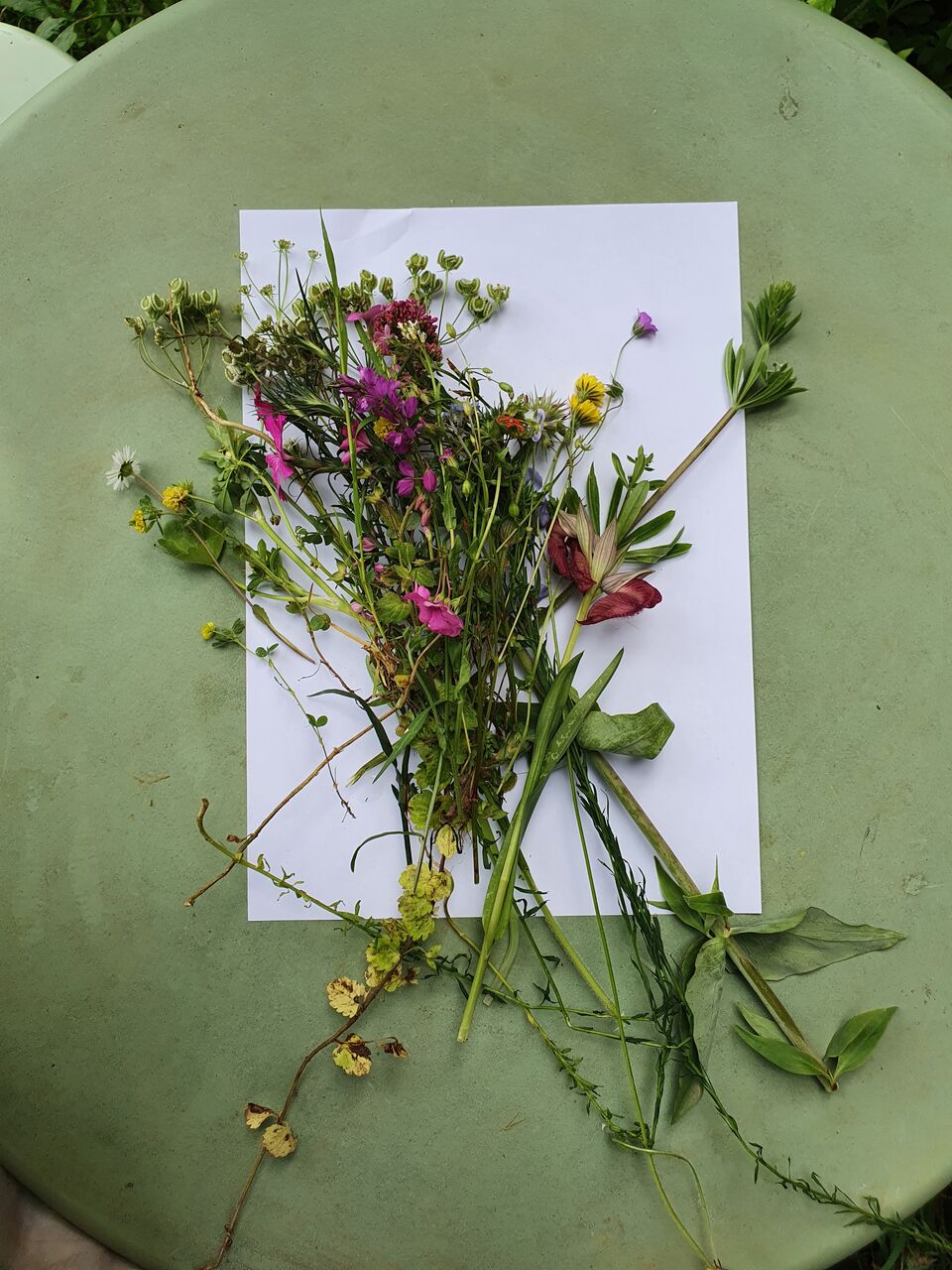 We started a digital herbarium to keep a record of all these magnificent colours and shapes.
We started a digital herbarium to keep a record of all these magnificent colours and shapes.
Over the years we observe this cycle. Especially, the process inside a compost mound which becomes a joy dispenser. If you have the chance to watch composting matter – seize it! You will never look or think about soil the same way again. To be a witness of this humus-in-the-making requires patience, as this process can take anywhere from three to six months depending on the temperature inside the mound.
Slow observation. Slow Soil-making. Slow Witnessing.
One moment we have a mound of mixed grass and plant cuttings, leaves, pruned twigs and vegetable scraps. The next moment we have a beautiful dark delicious soil matter. Then back again to plants, flowers and vegetables with a little help from us dispersing soil and seed around. It’s enchanting to experience.
We bought a compost thermometer. This is a thermometer stuck to the end of a half meter steel rod. You poke the rod deep into the compost pile and measure the activity going on inside. When the compost gets heated up, it can get as hot as 77 degrees Celsius. But at times, when in hibernation, temperature drops down to 15 °C. Then you know you must act! Get the compost heat started up again. Add water, stir the ingredients, or add the right layers of organic material. This is not unlike cooking a recipe with ingredients and instructions.
This “making and participating with the compost” becomes a dialogue between all organisms involved; the human organism and the microorganisms. Not forgetting the mycelia, fungi filaments that are also involved as matter decomposes inside the mound. We converse in the language of temperature, viscosity, wetness, and adequacy of green and brown matter.
To understand compost is to be aware of soil and its value. The thin layer of soil that forms a patchy covering over the continent controls our own existence and that of every other animal of the land.
—Rachel Carlson, Realms of the Soil
We too are humus in the making. Our human bodies eventually end up as soil too. We decompose. Nowadays, we can wrap ourselves in fungi packaging which speeds up the decomposition process. We are compost. We become soil too.
Soil therefore deserves a profound awareness, from understanding various typologies and recognizing soil characteristics, to making your own healthy soil. And it’s about relating to otherness. The other, the unfamiliar, the overlooked, the unmet. Most people living in cities have very scarce relationships to soil. Soil sustains all growth. This relating to the other, is about understanding that humans are an organism in close entanglement with the multi-species living with us on this planet. To appreciate soil is to understand ourselves too
Soil is the foundation of all terrestrial ecosystems. Its biota (biodiversity) support the lives of all above ground organisms, directly or indirectly via a complex of biological interactions.
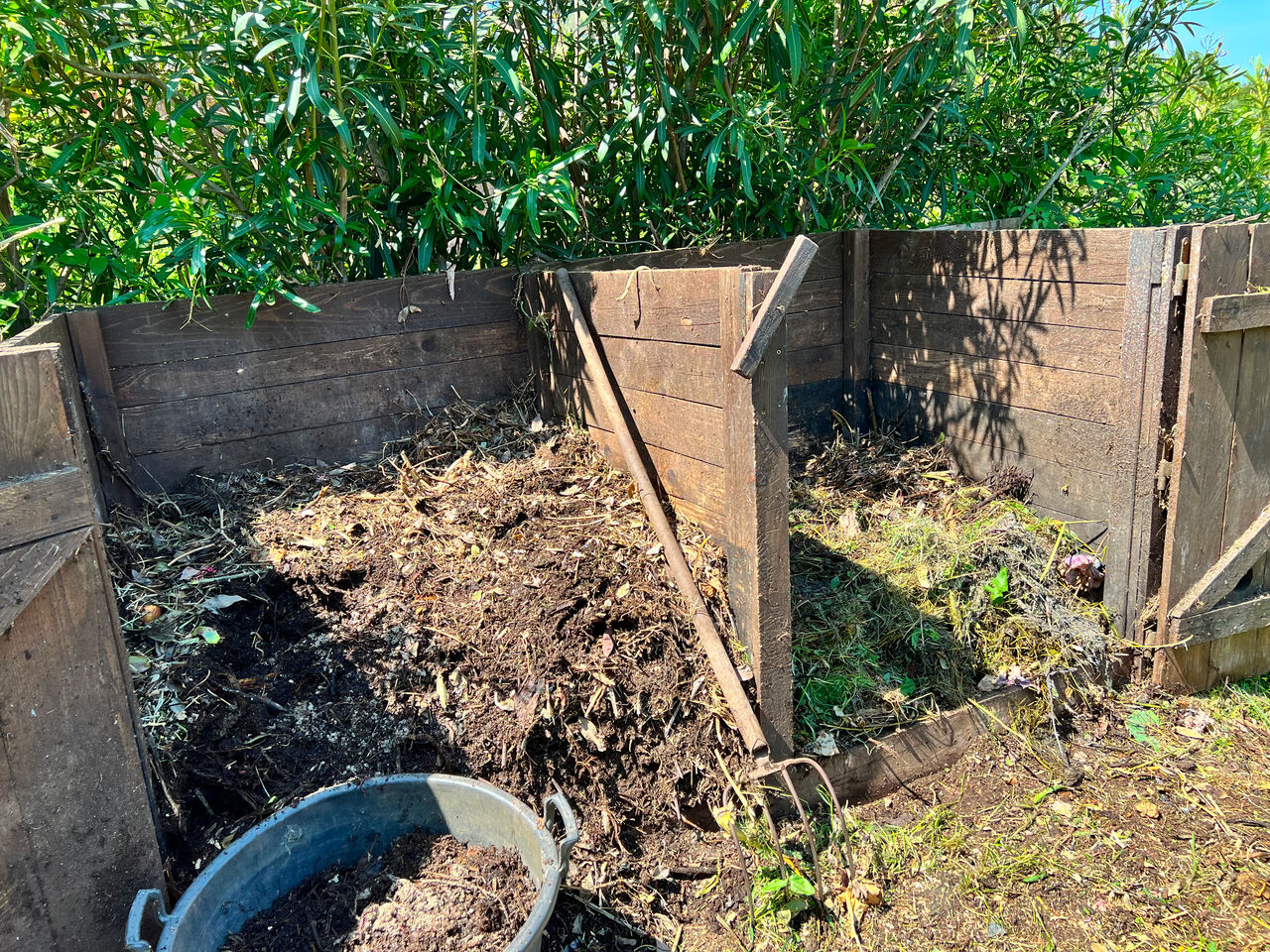
This is a recipe for thinking about soil; its biodiversity, microorganisms, growth, nutrition, and the many interlinking “living” worlds that sustain us. To grasp this, we can explore alternative ways in which to enter in a partnership with soil. Consider connecting with people who work with soil and share their knowledge, like the Soil Care Network
If working with soil on a farm is not available to you, you can stage a profound experience through embodiment. This means finding artful ways in which to get to know soil using the body. Sociologist Michael S. Carolan proposes that such experiences can have us understand why we need to live ecologically.
Approaching understandings of nature [...] from the angle of embodiment, reveals important insights that would otherwise fly below our theoretical radar. [...] If we think with our bodies then we must think about nature with our bodies too Michael S. Carolan
This embodied understanding can help to enter into both a psychological and physiological companionship with soil. Cognitive scientists George Lakoff and Mark Johnson believe that the way in which we comprehend the world and create a conceptual system of beliefs and ethics is significantly tied to our bodies. Bodies that embody, experience and encounter.
Because our conceptual systems grow out of our bodies, meaning is grounded in and through our bodies. George Lakoff and Mark Johnson
The following recipe is a method to embody soil. Through a lens of the senses, used to understand the rich, complex, and diverse properties of soil.

Without further ado, let’s cook!
Soil Recipe
Were you always told not to eat soil when you were small? Well, now you have full permission.
This is an invitation to cook and discover soil together. Not via compost. Rather, to experience soil from another perspective, from the angle of taste.
An online quiz to test your knowledge about soil biology: How “Soil Savvy” Are You?
A soil tasting like artist Laura Parker procures in her performances, notably the Sweet and Sour Soils recipe. Or, a “Soil Tasting Ceremony” like on the Back to the Land course in Sweden, but for this all participants need to be in the same soil space and be certain the soil is safe for digesting. Hence, here’s an invite to metaphorically cook up the soil. See John Thackara’s text on the Soil Tasting Ceremony for diverse approaches to tasting soil from the Back to the Land Course at Konstfack University. An embodied experience as a way to strengthen our relationships to and with nature. For an in-depth account see Anna Maria Orru’s Wild Poethics.
To Prepare
- Begin with dipping your hands into the soil. Go find a small “handful” of soil – preferably one that recognizes the richness inherent in soil
- Next, get to know your soil. Look at it, smell it, feel it, rub it between your fingers. What characteristic keywords would you give to your sample? For example, powdery, slippery, slimy, moist, squishy, dry, paste, crunchy, dusty, hard, gritty, clay-like, chewy, sandy, et cetera
- What colours does your sample have? For example, red, brown, earthy tones, dark black et cetera
- Try assigning one of the six soil types to your sample. This may jolt your imagination further in finding keywords. Study the six basic soil types from the table below. This source may help you learn more about your soil sample too.
- Finalize your list of soil keywords. You can use these keywords to make your recipe in the next stage.
Six Soil Types
More information on the 6 soil types can be found at BBC Know Your Plot.

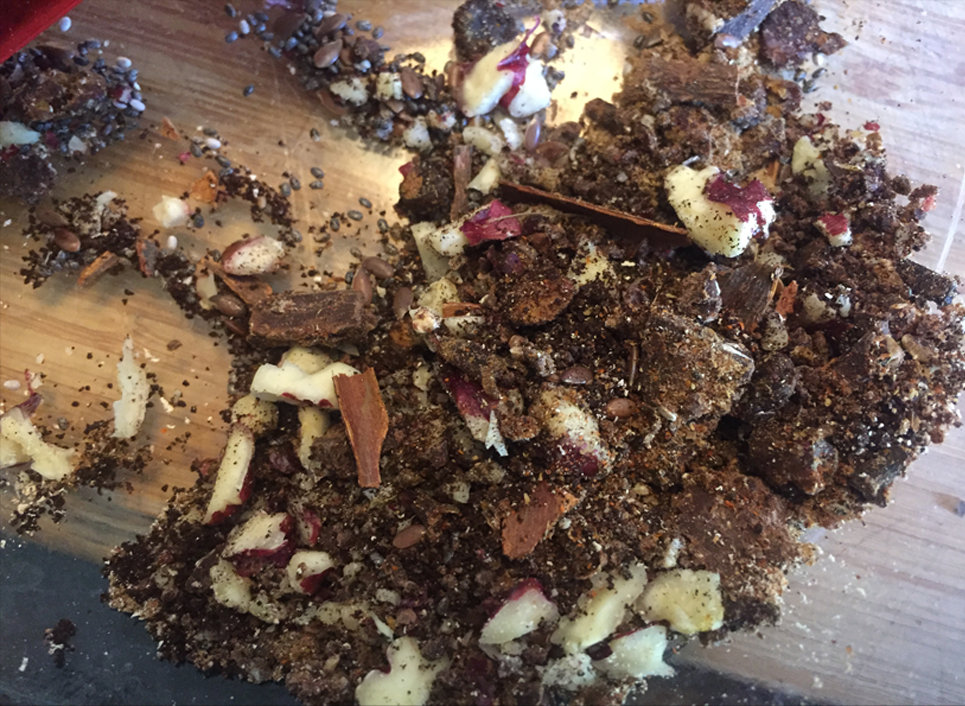

| Clay |
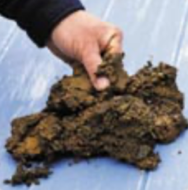
|
Feels lumpy and sticky when very wet Rock-hard when dry Clay drains poorly Warms slowly in spring Heavy to cultivate |
| Sandy |

|
Free-draining soil Gritty to touch Warms up quickly in spring Easy to cultivate Dries out rapidly May lack nutrients, which are easily washed through the soil in wet weather (often called a "hungry" soil.) |
| Silty |
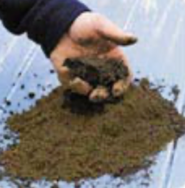
|
Smooth and soapy to the touch Well-drained soil Retains moisture Richer in nutrients (more fertile) than sandy soil Easier to cultivate than clay Heavier than sand Soil structure is weak and easily compacted |
| Peaty |

|
Contains higher proportion of organic matter (peat) But this means there are few nutrients Dark in colour Warms up quickly in spring Highly water-retentive |
| Chalky |
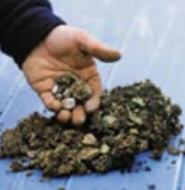
|
Usually stony Free draining Often overlays chalk or limestone bedrock |
| Loamy |

|
The perfect soil Good structure Drains well Retains moisture Full of nutrients Easy to cultivate Warms up quickly in spring and doesn’t dry out in summer Consider yourself very lucky if you have this soil |
To Gather
Search for your keywords in the ingredients list. Choose and gather the edible ingredients that match your soil properties the most closely.
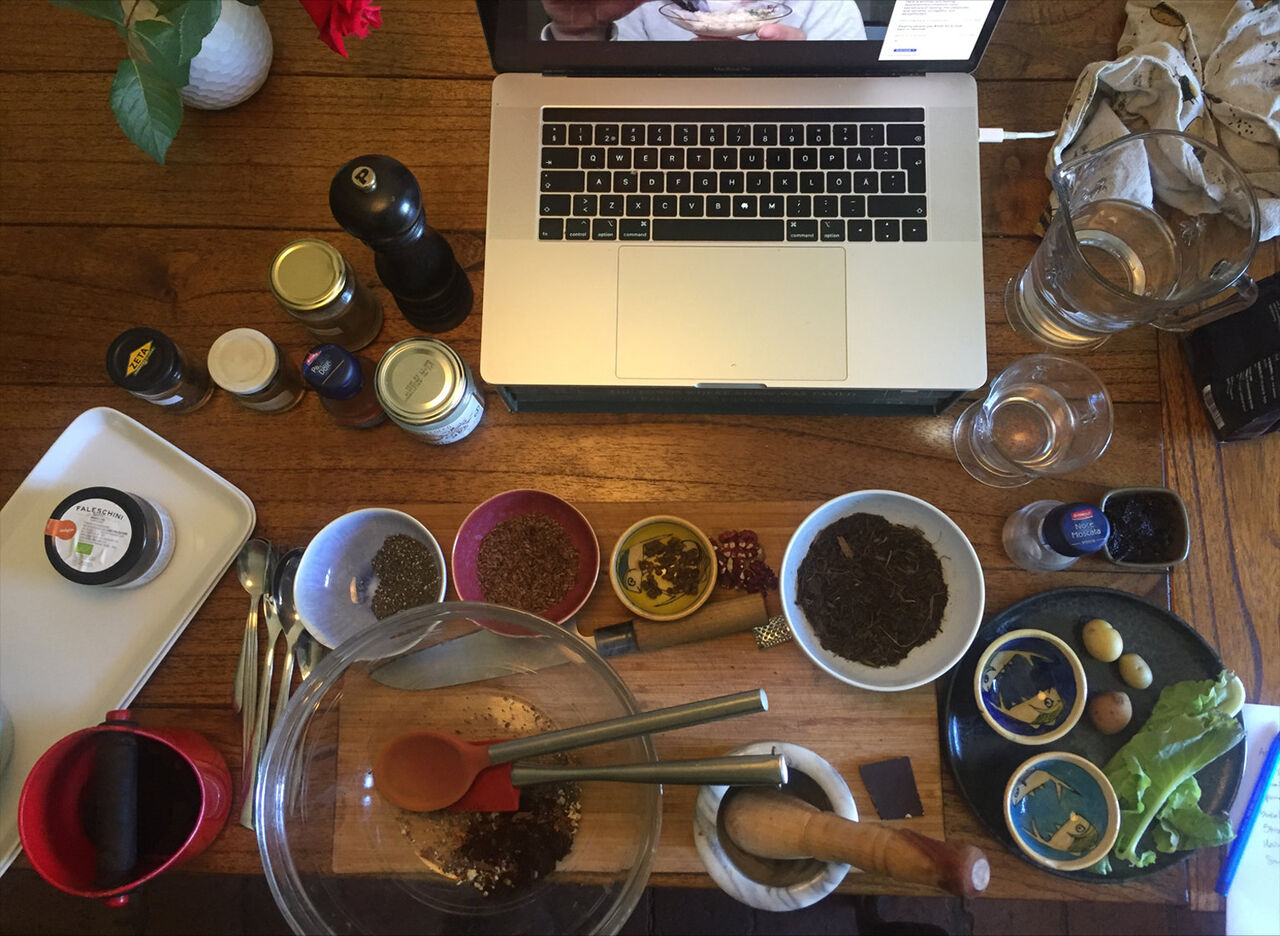

Ingredients List
This edible list was prepared together with Corina Akner from the Värt food lab for the “Back to the Land 2.0” course in summer 2021.
| Powdery/Dusty | Any herb powder, powdered sugar, flour, instant coffee, baking powder, cacao powder, maizena, almond flour, chickpea flour, potato flour |
| Slippery | Oil, banana peel, butter, spaghetti |
| Slimy | Chia seeds, flax seed |
| Moist | Citrus fruits, bread soaked in water, apple sauce, mayonnaise (aqua fava & oil), avocado |
| Squishy | Marmelade, jam, jelly, Winegums, soft liquorice |
| Dry | Rolled oats, whole dried herbs, crushed nuts |
| Paste | Paté, dijon mustard, nutella, tomato puree, mashed potatoes, humous, squashed avocado |
| Hard/Brittle | (Dark) chocolate, eggshells, hard bread, hardened caramel, corn flakes, walnuts crushed |
| Gritty | Instant coffee, used coffee grounds, cheese chips, crushed cookies, oat cookies, sprinkles |
| Clay-like | Peanut butter, coconut oil, dates, a little bit of softened butter mixed with ground coffee |
| Sandy | Unused coffee grounds, very thin crushed cookies, chewing gum, liquorice, couscous |
| Chewy | Jelly beans, winegums, chewing gum, liquorice |
To Re-create
Your aim is to make an edible “soil ball” that embodies the different sensorial properties of your soil. Place your soil sample within eyesight so you can be inspired by it during the process. We would like to collect your soil recipes and images into a soil cook catalogue. So don’t forget to take images along the way of your process and your final soil ball.
- You need one large bowl (preferably a light colour so you can see the tone of your soil), a mixing spoon, a serving plate
- Lay out your edible ingredients in front of you.
- Slowly mix and add ingredients that match the soil properties from your keywords. Taste along the way. Follow your nose, tongue, and fingers. Let them guide you. Keep referencing to your soil sample.
- As you re-create your soil ball, use your senses to explore the smell, texture, colour, infiltration (porosity), and consistency.
- When you are pleased with your re-created soil, roll it into a small ball. Arrange your soil ball on your serving plate, the way you imagine a small garden would look. Grab a few lettuce leaves, a vegetable, or herbs to garnish and decorate your soil.
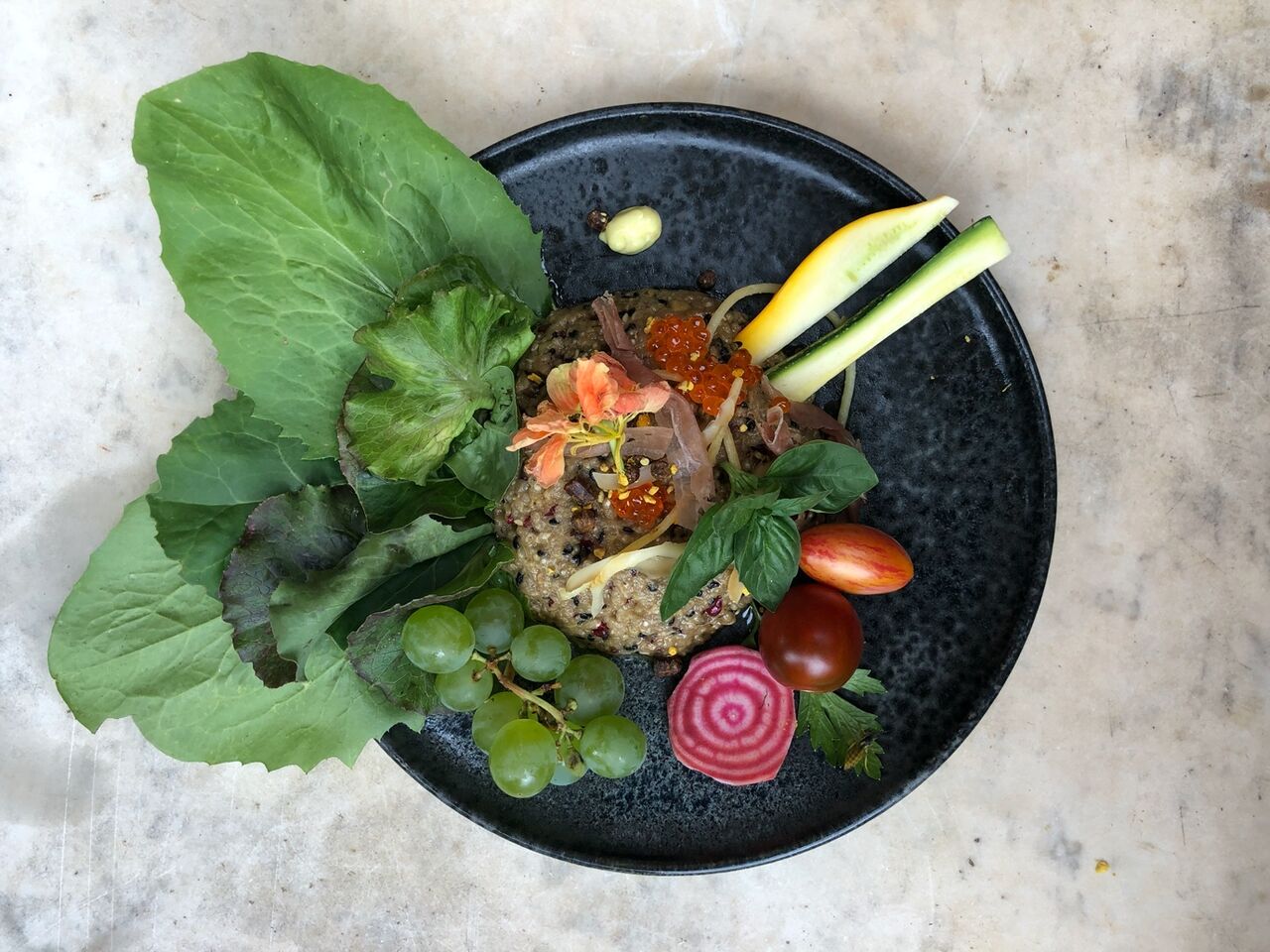
❧
Further Reading & references can be found in the bibliography.